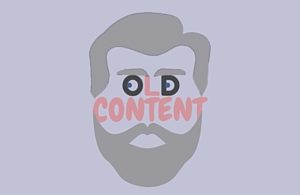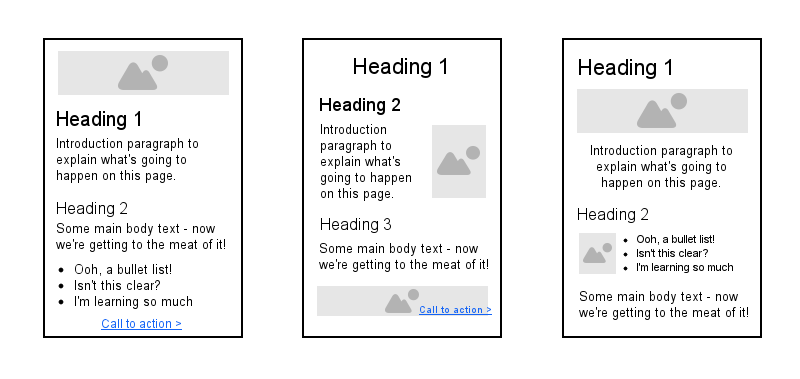We’ve all got those random pieces of content that outperform everything else no matter what we do. Irritatingly for a content writer, it’s often older stuff that you didn’t write.
It sucks.
Even when you did write this golden content, you often don’t know what you did that was so great. You had an idea, you bashed out some copy and found a nice picture.
But instead of ignoring it or every so often glancing at it admiringly, rip it apart. Unpick it to find out how it’s made, then use what you find as a framework to inform new content.
Find out why your best content is doing so well
Your best performers hold the secret recipe for success. Yeah, they have age on their side, but considering search engines favour fresh content, there must be a bit more to it than that.
We know we’re supposed to A/B test things to find out what works best but sadly we don’t all have the time or budget to do that. Assessing your best performing content can give you decent insight without having to invest extra resource.
Take your 10 best posts and see what they have in common. You’ll end up with your recipe for success.
How to identify your best content
Organic pageviews:
Organic is important because it tells you if your content is search engine dynamite or not. Although there’s no definitive number on what’s a good level of traffic, you’ll know which posts seem to appear high on the list month after month, so they’re the ones to steal secrets from.
Social shares:
When real humans like your content enough to share it to their friends, identifying themselves with your brand – ugh, it’s beautiful. Social shares indicate that your content is valuable but also that people think your brand is worthy of being part of their OWN brand.
For instance: as a writer (there’s that phrase again), I follow brands who reflect my values in marketing. Endorsing them says something about my personality. We’re all aware of this (maybe subconsciously), which is why so many people share stuff they haven’t even read.
“68% of people share to give a better sense of who they are and what they care about.”
Adweek
Time on page:
Time on page is incredibly important. It tells you whether your content is being read or not. The average person reads at a speed of 200-300 words per minute, with a comprehension level of about 60% – so they take in just over half of what you have to say.
If you have a post that’s 800 words long, that should take around four minutes. Let me just tell you now: you will rarely see a time on page of four minutes. Unless you’re hosting the Twilight books online, it’s just not going to happen.
Online, people don’t sit and read every word of your carefully crafted post. They scan, typically reading headings and paragraph beginnings, trailing off towards the left and bottom of the page.
So what is a good time on page? I’d say you should feel comfortable with anything over a minute, as long as the page in question isn’t something you spent thousands of pounds on. For a content bank I write, we see an average of three minutes, which is pretty high for an average word count of around 800 words.
Things to analyse your best content for
Layout:
Is there one particular layout your best posts have in common? I’ve written about the template for a good post before but it’s a personal thing that has to adapt to your content – so what’s working for you?
Imagery:
Do you get lots of shares when you post content with lots of images? Does your best-performing content use owned media (graphics you’ve created or personal photography) rather than stock images?
We know people like pictures so we kind of go “Oh, let’s find a picture to finish this post off”, rather than planning the imagery alongside the content so they work together. Stop doing that. Your image is more than a colourful thing that fits in the page – it should be an instant summary of the feeling of your piece.
It’s also going to appear on social media when the post is shared so it has to have stand-alone value. Make sure it’s eye-catching and intriguing. If you don’t have a featured image for every post, get one. Now. Tweets with images are retweeted 150% more than those without. Give yourself a chance to be great.
An interesting experiment would be to swap out your old imagery for something completely different and see if it affects how users interact with your content.
They might LOVE it, in which case time on page and shares could go up – telling you what to use for your newer content. They might HATE it, in which case time on page and shares might go down and you’ll know the original imagery was the way to go. Exciting!
Meta data:
The first thing your organic visitors see is your post in search engine results. Title, URL and meta description. I can tell you some best practice for this but your successful content is going to be helpful too because the people you want ARE clicking on it.
- Meta title: The title of your post as long as it’s not more than 55 characters.
- URL: This will be automatically pulled from your post URL but a URL that reads like a sentence, not a mathematic equation, is better for the visitor.
- Meta description: A unique summary of your post, preferably with a call to action to make people click. Keep it to 156 characters so it doesn’t get cut off.
Your meta data is an advert for your page. See if your best posts use that general best practice and consider making that your set style for meta data if they do.
It might be you haven’t been doing these things and your posts are still doing pretty well. However, they could be doing BETTER so think about doing some little tweaks.
Word count:
I’ve said many MANY times that there is no one perfect length for a web page. It is so dependent on topic, style, audience type…everything! However, you can work out from your own copy what your AVERAGE user likes. If you’ve put out a fair bit of content over the years, there are going to be some patterns to what kind of word count works.
Don’t aim to come out with a definitive rule like “Our customers like posts with 756 words in them.” Look for guidelines: “Our customers like our news updates to be short with lots of headings” and “Our customers like our how-to posts to be over 1000 words.”
Just a hint: longer content is often ranked over short content (if it’s good quality) because a search engine will probably prioritise it for a user. After all, if both pieces of content are really good but there’s MORE of the good stuff in the longer piece…it makes sense, right?
Did you see my post about little SEO tweaks you can do in minutes? You do NOT want to miss it.
[bctt tweet=”Analyse your best performing posts to help you write amazing new content “]








